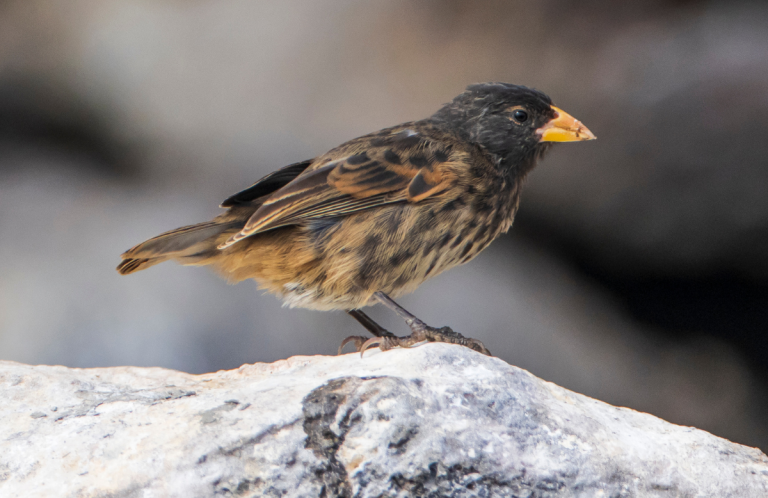 Like its mythological namesake, the beautiful Long-tailed Woodnymph is a creature of forests — in this case, eastern Brazil's Atlantic Forest, a tremendously diverse habitat home to hundreds of bird species. Many of these, including Seven-colored Tanager, Banded Cotinga, and Pin-tailed Manakin, are found nowhere else.
Like its mythological namesake, the beautiful Long-tailed Woodnymph is a creature of forests — in this case, eastern Brazil's Atlantic Forest, a tremendously diverse habitat home to hundreds of bird species. Many of these, including Seven-colored Tanager, Banded Cotinga, and Pin-tailed Manakin, are found nowhere else.
The endangered Long-tailed Woodnymph is just one of many of Brazil's birds that are threatened by habitat loss as forests give way to sugarcane fields, coffee plantations, and other agriculture. Unlike the Stresemann's Bristlefront, which shuns places inhabited by humans, this hummingbird seems to accept some man-made habitats and can be found in parks and gardens, as long as patches of trees remain.
Forests Under Siege
The Atlantic Forest extends from eastern Brazil south into Paraguay, Uruguay, and Argentina. This vast region encompasses a variety of habitat types, from mangroves along the eastern coast to higher-altitude wet forests and dry shrubby forests farther inland.
In Brazil, more than 85 percent of this habitat has been cleared. The Long-tailed Woodnymph makes its home in remaining forest fragments in the eastern states of Pernambuco and Alagoas.
Feeding Along the Forest Floor
Like other hummingbirds, the Long-tailed Woodnymph feeds mainly on nectar, which it sips from a wide variety of flowering vines, epiphytes, shrubs, and trees.
Bennett Hennessey, ABC's Brazil Conservation Program Coordinator, has been fortunate enough to watch these woodnymphs as they forage for food. "They cover a route through the understory, navigating around vine tangles and buttress-rooted trees to seek out nectar from low-growing plants. Often, they're seen as just a quick burst of color passing between the trees."
Long-tailed Woodnymph Looks
The Long-tailed Woodnymph is sexually dimorphic, meaning that males and females look different. As with other hummingbird species, such as Marvelous Spatuletail and Long-tailed Sylph, males have all the flash. Male woodnymphs flaunt iridescent blue, green, and purple plumage and a deeply-forked blue tail. Female plumage is much more subdued, enabling them to remain inconspicuous as they build nests and tend their young.
Sign up for ABC's eNews to learn how you can help protect birds

Female Long-tailed Woodnymph on nest by Stephen Jones
Help from a Hummingbird Garden
ABC and Brazilian partner SAVE Brasil are working together to protect shrinking Atlantic Forest habitat, particularly at the Serra do Urubu (Forest of Hope) Reserve, where a healthy population of Long-tailed Woodnymph benefits from this protected area.
In November 2017, the reserve inaugurated its new Hummingbird Garden (Jardim de Beija-flores) developed to attract hummingbirds — and people. The garden is part of a program to involve local communities in Atlantic Forest conservation and inspire them to learn more about the region's remarkable diversity.
With native plantings, nectar-rich flowers, and fruit and nectar feeders, the garden brings hummingbirds into view, while signs spaced along winding paths provide information. A shaded pavilion enables visitors to rest, watch birds, and admire the scenery.
The Long-tailed Woodnymph, a focal species of the garden, is the rarest of about 20 hummingbird species that have been sighted at the feeders. Other visitors include Swallow-tailed Hummingbird, Ruby-topaz Hummingbird, and Frilled Coquette.
Although the Serra do Urubu Reserve has no overnight lodgings at this time, daytime visitors are welcome and can make arrangements through SAVE Brasil.
Donate to support ABC's conservation mission!



















































